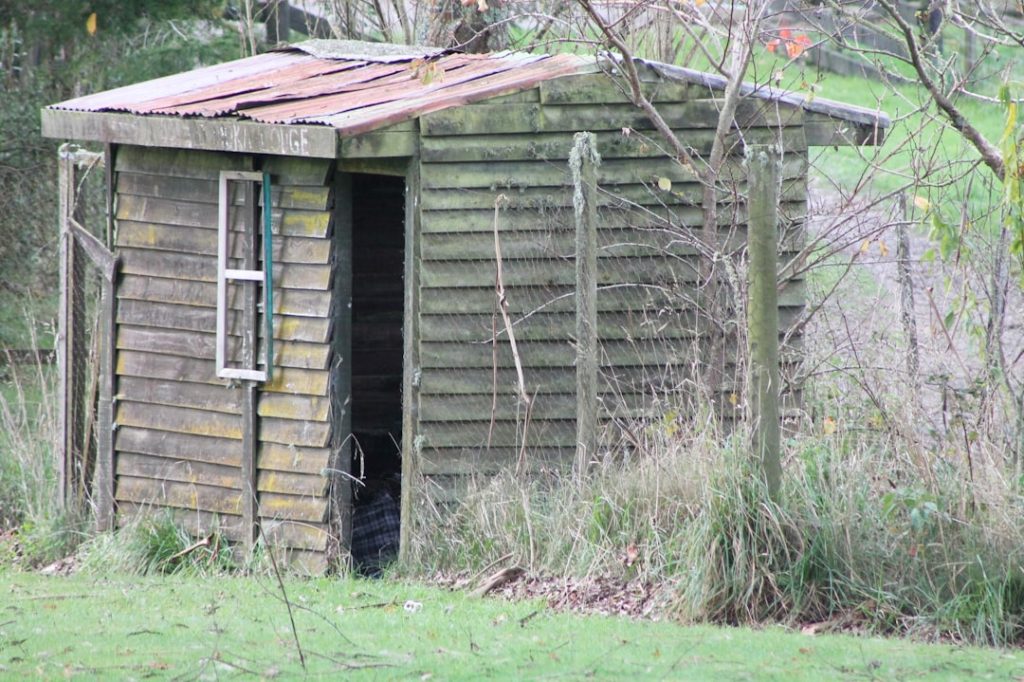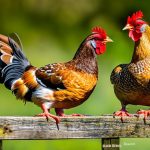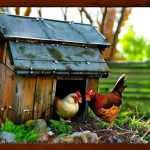Hawks pose a significant threat to backyard chickens, and poultry owners should be able to identify these birds of prey. Several hawk species commonly target chickens, including Cooper’s hawks, red-tailed hawks, and sharp-shinned hawks. These raptors are characterized by their exceptional vision, powerful talons, and agile flight capabilities, making them efficient predators of poultry.
Familiarizing oneself with the physical attributes and behaviors of these hawks is crucial for implementing effective protective measures for chickens. Understanding hawk behavior patterns is equally important for poultry owners. Hawks typically employ hunting techniques that involve sudden descents from above to capture unsuspecting prey.
They often perch in elevated locations such as trees or utility poles to survey their surroundings for potential targets. By recognizing these behavioral traits, chicken keepers can better anticipate and prevent potential attacks on their flocks. The ability to identify hawks and comprehend their hunting strategies is fundamental in safeguarding chickens from these predators.
Table of Contents
- 1 Creating Safe Enclosures: Building Chicken Coops and Runs
- 2 Providing Cover: Planting Trees and Shrubs for Protection
- 3 Using Deterrents: Scare Tactics and Visual Aids
- 4 Supervising Free-Range Time: Monitoring Your Chickens’ Outdoor Activities
- 5 Training and Conditioning: Teaching Chickens to Recognize and Flee from Hawks
- 6 Seeking Professional Help: Consulting with Local Wildlife Experts
- 7 FAQs
Key Takeaways
- Hawks are a common threat to chickens in many areas and can be identified by their sharp talons and hooked beaks.
- Building secure chicken coops and runs can help protect chickens from hawk attacks.
- Planting trees and shrubs can provide cover and protection for chickens from aerial predators like hawks.
- Scare tactics and visual aids, such as reflective objects or noise makers, can help deter hawks from targeting chickens.
- Monitoring chickens’ outdoor activities and training them to recognize and flee from hawks can help keep them safe.
Creating Safe Enclosures: Building Chicken Coops and Runs
Building a Secure Chicken Coop
One of the most effective ways to protect your chickens from hawks is to provide them with a secure and enclosed living space. Building a sturdy chicken coop is essential for keeping your flock safe from predators, including hawks. The coop should be constructed with strong materials and secure latches to prevent any potential entry points for hawks or other predators.
Designing a Safe and Comfortable Run
Additionally, the run should be covered with wire mesh or netting to provide an extra layer of protection from aerial attacks. When building a chicken coop and run, it’s important to consider the size and layout of the enclosure. Chickens should have enough space to move around freely and engage in natural behaviors, such as scratching and dust bathing.
Providing Essential Amenities
The coop should also include roosting bars and nesting boxes for the chickens to rest and lay eggs. By providing a safe and comfortable living space for your chickens, you can minimize the risk of hawk attacks and ensure the well-being of your flock.
Providing Cover: Planting Trees and Shrubs for Protection
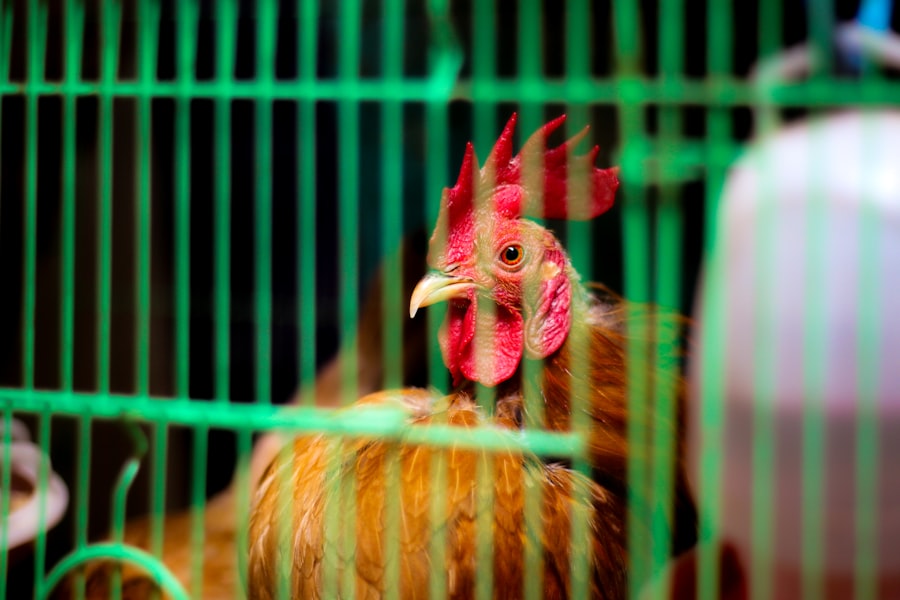
In addition to building secure enclosures, planting trees and shrubs around your property can provide natural cover and protection for your chickens. Dense vegetation can create hiding spots for chickens to take cover in case of a hawk sighting, making it more difficult for hawks to target them. Trees and shrubs also provide shade and shelter for chickens, creating a more natural and comfortable environment for them to thrive in.
When selecting plants for your property, it’s important to choose species that are suitable for your climate and soil conditions. Evergreen trees and shrubs can provide year-round cover for your chickens, while deciduous trees can offer shade in the summer months. Additionally, planting a variety of species can create a diverse and resilient habitat for your chickens, as well as other wildlife.
By strategically planting trees and shrubs around your property, you can create a more secure and natural environment for your chickens to live in.
Using Deterrents: Scare Tactics and Visual Aids
There are several deterrents that poultry owners can use to discourage hawks from targeting their chickens. Visual aids, such as scarecrows, reflective tape, or predator decoys, can be effective in deterring hawks from approaching your property. These visual deterrents can create the illusion of a threat or danger, causing hawks to avoid the area altogether.
Additionally, installing motion-activated lights or sprinkler systems can startle hawks and other predators, making them less likely to target your chickens. Another effective deterrent is the use of sound devices, such as predator calls or distress calls of other birds. These sounds can mimic the presence of a larger predator or signal danger in the area, causing hawks to steer clear of your property.
It’s important to regularly move and change the placement of these deterrents to prevent hawks from becoming accustomed to them. By using a combination of visual aids and sound devices, poultry owners can effectively deter hawks from preying on their chickens.
Supervising Free-Range Time: Monitoring Your Chickens’ Outdoor Activities
Allowing chickens to free-range can provide them with exercise and access to natural food sources, but it also exposes them to potential threats from hawks. It’s important for poultry owners to supervise their chickens’ outdoor activities to ensure their safety. By keeping an eye on your flock while they are free-ranging, you can quickly intervene if a hawk is spotted in the area or if your chickens show signs of distress.
Supervising free-range time also allows poultry owners to observe the behavior of their chickens and identify any potential vulnerabilities. For example, chickens that are isolated from the flock or are displaying signs of fear may be more susceptible to hawk attacks. By closely monitoring your chickens’ outdoor activities, you can take proactive measures to protect them from potential threats and ensure their well-being.
Training and Conditioning: Teaching Chickens to Recognize and Flee from Hawks
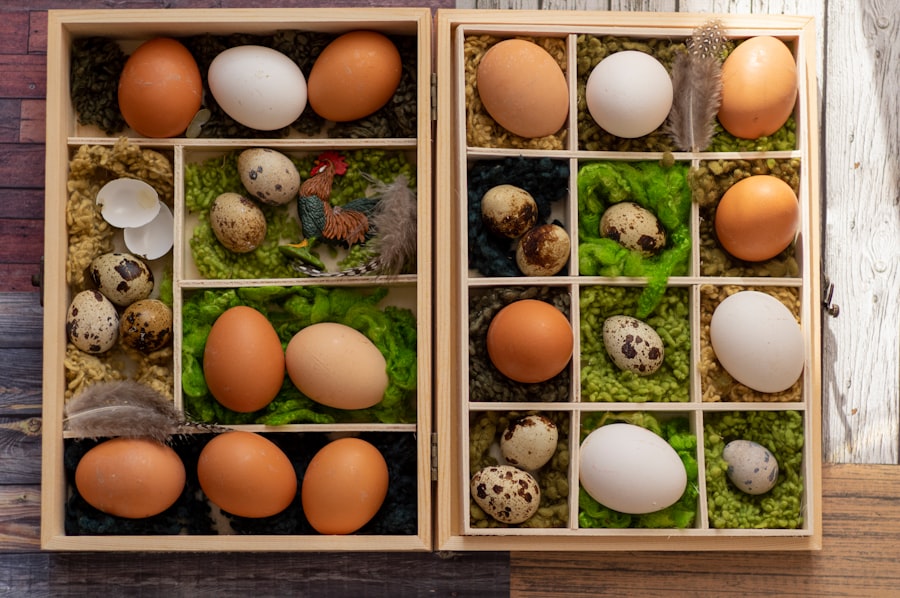
Conditioning Chickens to Recognize Danger
Training chickens to recognize and flee from hawks can be an effective way to protect them from potential attacks. By using visual aids or sound devices in controlled training sessions, poultry owners can teach their chickens to associate these cues with danger and take cover when they are presented. This conditioning can help chickens develop a natural instinct to flee from hawks when they are spotted, reducing the risk of predation.
Learning from Others
In addition to training sessions, allowing chickens to observe other birds or wildlife reacting to potential threats can also help them learn to recognize danger. For example, observing wild birds taking cover or sounding alarm calls in response to a hawk sighting can help chickens understand when they are in danger.
Developing Survival Instincts
By providing opportunities for chickens to learn from their surroundings and conditioning them to recognize potential threats, poultry owners can help their flock develop survival instincts that can protect them from hawks. This multi-faceted approach can be an effective way to safeguard chickens from hawk attacks and ensure their well-being.
Seeking Professional Help: Consulting with Local Wildlife Experts
If you are facing persistent hawk predation on your chickens despite taking preventive measures, it may be beneficial to seek professional help from local wildlife experts. Wildlife biologists or conservation officers can provide valuable insights into the behavior of hawks in your area and offer recommendations for managing potential threats. They may also be able to provide guidance on obtaining permits for non-lethal control methods or offer assistance in relocating problem hawks if necessary.
In some cases, professional wildlife experts may also be able to conduct on-site assessments of your property and provide personalized recommendations for protecting your chickens from hawks. By consulting with local experts, poultry owners can gain access to specialized knowledge and resources that can help them effectively manage the threat of hawk predation on their flock. Seeking professional help can be a valuable resource for poultry owners who are facing persistent challenges in protecting their chickens from hawks.
If you’re looking for more tips on keeping your pet chickens safe, you might want to check out this article on chicken coop nest boxes. It’s important to provide a secure and comfortable environment for your chickens to help protect them from predators like hawks.
FAQs
What are the main threats to pet chickens from hawks?
Hawks are a common threat to pet chickens as they are natural predators and are known to attack and kill chickens.
How can I keep my pet chickens safe from hawks?
To keep pet chickens safe from hawks, it is important to provide them with a secure and enclosed coop or run. Additionally, using netting or wire mesh over the top of the coop or run can help prevent hawks from swooping down and attacking the chickens.
Are there any other measures I can take to protect my pet chickens from hawks?
Other measures to protect pet chickens from hawks include providing hiding spots such as bushes or shrubs in the chicken’s outdoor area, and using scare tactics such as hanging shiny objects or using noise makers to deter hawks from approaching.
What should I do if I spot a hawk near my pet chickens?
If you spot a hawk near your pet chickens, it is important to take immediate action to protect them. This can include making loud noises, waving your arms, or using a water hose to scare the hawk away. It is also important to supervise your chickens when they are outside to ensure their safety.
Meet Walter, the feathered-friend fanatic of Florida! Nestled in the sunshine state, Walter struts through life with his feathered companions, clucking his way to happiness. With a coop that’s fancier than a five-star hotel, he’s the Don Juan of the chicken world. When he’s not teaching his hens to do the cha-cha, you’ll find him in a heated debate with his prized rooster, Sir Clucks-a-Lot. Walter’s poultry passion is no yolk; he’s the sunny-side-up guy you never knew you needed in your flock of friends!

